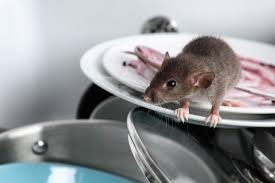Not all insects are the same, and neither are their control methods. While general pest sprays may offer temporary relief, long-term protection requires a more precise approach. Insect-specific treatments focus on identifying and targeting individual insect species using tailored strategies, ensuring maximum effectiveness and safety for homes, businesses, and families.
Why Insect-Specific Treatments Matter
Each insect species has its own behavior, breeding cycle, diet, and preferred environment. For instance, ants may follow scent trails to food sources, while bed bugs hide in mattresses and come out only at night. Treating all insects the same way often leads to failed attempts, reinfestation, and wasted resources.
Insect-specific treatments are designed with the biology and habits of each pest in mind. This approach not only eliminates existing infestations but also prevents future outbreaks by disrupting the pest’s life cycle and closing off entry points.
Common Insects and Their Targeted Treatments
1. Ants
Ant infestations often stem from colonies located outside the home. Professionals use non-repellent sprays and gel baits placed in strategic areas where ants travel. These products are carried back to the colony, wiping out the entire population, including the queen.
2. Cockroaches
Roaches hide in dark, moist areas and multiply rapidly. Insect-specific treatments involve bait stations, insect growth regulators (IGRs), and deep cleaning of harborages. Targeted gels and residual sprays ensure that roaches come into contact with lethal doses even after technicians leave.
3. Bed Bugs
These nocturnal bloodsuckers are notoriously difficult to eliminate. Heat treatments, steam cleaning, and insecticide dusts are common insect-specific methods. Technicians often perform multiple visits to ensure all stages of the bed bug life cycle are eradicated.
4. Fleas
Fleas infest both pets and carpets. Treatment includes pet-safe insecticides, vacuuming, and sprays that kill adult fleas and prevent larvae from developing. IGRs are critical to halting the flea life cycle.
5. Termites
Unlike other insects, termites feed on wood and live underground. Treatments include liquid termiticides applied around the foundation, bait systems installed in the soil, and wood treatments to deter future attacks.
6. Wasps and Hornets
Stinging insects require cautious, direct treatments. Professionals locate the nest, apply specialized aerosol sprays, and remove the nest safely. Preventive repellents are used to keep wasps from rebuilding.
Advantages of Insect-Specific Approaches
- Precision: Treat only the pests present, reducing unnecessary chemical use.
- Efficiency: Faster, longer-lasting results by targeting behaviors and habitats.
- Safety: Lower toxicity to people, pets, and beneficial insects like bees.
- Sustainability: Reduces pest resistance due to overuse of broad-spectrum pesticides.
Partnering with Professionals
Licensed pest control technicians are trained to identify insect species and recommend the most effective treatment plan. They monitor results, adapt strategies as needed, and ensure the environment remains pest-free.
Conclusion: Smart Pest Control Starts with Specificity
Insect-specific treatments are the modern, responsible answer to controlling unwanted pests. By understanding the unique habits and biology of each insect, these targeted solutions offer safer, smarter, and more sustainable pest control. Say goodbye to one-size-fits-all sprays and embrace the precision of pest management that truly works.
